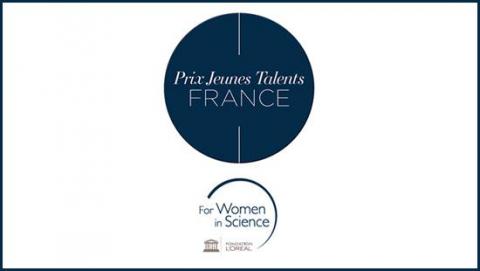
Women in Digital Professions
While job offers in the digital sector are abundant, women occupy only 30 percent of these positions. How can this under-representation of women be explained? Virginie Julliard, a university professor in information and communication sciences at CELSA* and a specialist in gender issues, provides some answers.
There are few women in digital studies and professions. Yet in the early days of computing there was relative parity. How did this imbalance develop?
Virginie Julliard: There is no single answer. At the end of the 19th century, the evolution of girls' education, the reform of the dowry system and the departure of men to war encouraged women to study longer and to enter careers as teachers or telecommunications workers. They were a cheaper source of skilled labor than men. In the computer industry, women engineers and mathematicians played an important role, particularly in the United States, until the 1960s. Then their proportion decreased.
If, with time, girls have gained access to higher education more easily, they are still not generally encouraged towards scientific studies that would allow them to have careers in computer science. Numerous surveys show that the social construction of technologies is gendered. The lack of enthusiasm seen in girls for computer science studies can be explained by how technologies have been considered. The so-called "exact" sciences (such as mathematics and physics) are perceived as being opposed to areas of feminine achievement in the collective imagination (reproduction, childcare, interest in nature and the living). And these stereotypes still persist today.
Sociologist Josiane Jouët has shown that women once again came closer to computing through the development of office automation tools, and again when the appearance of messaging systems transformed computing into a communication technology. In the private sphere, however, Laurence Ledouarin emphasizes that men still have privileged access to technological objects, and to the family computer.
In the 70s and 80s, some people saw the explosion of computers as an opportunity for women's emancipation, didn't they?
V. J.: Indeed, sociological works have put forward the fact that Internet could favor the development of new forms of feminism (cyber feminism). Researchers regarded the development of the web as an opportunity to bring their aspirations and goals to the fore and to create spaces for discussion (forums). For others, the Internet (and dating sites for example) is a territory of incivility, even violence, enabled by anonymity.
Can we say that digital technologies are "gendered"?
V. J.: Yes. First of all, there is no thought given to gender by website designers, and their digital tools make for a fairly homogeneous group socially, in terms of gender and other aspects. They typically imagine that their audiences look like them, that they have the same technical skills, and they don't think about audiences that are different from them. And when they do think about them, it is most often in a stereotypical way. As a result, the technical solutions they propose do not necessarily correspond to the expectations of different users. More seriously, they sometimes introduce biases.
These biases can be of different kinds. Let's take the well-publicized example of a large engineering company that relied on artificial intelligence to recruit its future employees. To train the algorithm, the designers provided it with the CVs of people who had been recruited for several decades. As the vast majority of the people were men, the algorithm integrated gender as a discriminating variable for recruitment and systematically rejected women. This is known as a selection bias in the training data. The designers were not aware of the gendered nature of access to certain occupations, and therefore did not set the algorithm to take this historical bias into account. However, if we are not aware of the implicit norms with which we live, this creates a norm that the machines learn and reproduce.
With your doctoral candidate Thibault Grison, you have obtained funding from the Sorbonne Center for Artificial Intelligence (SCAI) to conduct research on algorithmic discrimination. Can you elaborate?
V. J.: There are many biases. They concern the homogeneous recruitment of designers (favoring the reproduction of stereotypes) or the selection of learning data. They affect women, but also sexual and ethno-racial minorities, for example. The moderation algorithms used by social networks to fight against pornography or "online hate" thus delete a lot of non-problematic content, jeopardizing the freedom of expression of already weakened categories. For example, these algorithms look for large areas of bare skin in photos to detect pornographic images. It has been found that this has resulted in the deletion of photos of people considered "fat" even though they were not pornographic. And there is no shortage of examples like this.
Virginie JulliardMany surveys show that the social construction of technologies is gendered.
In your opinion, how can we re-establish a homogeneous representation of women and men in digital-related studies?
V. J.: As far as guidance is concerned, sociologist Catherine Marry has shown that there are two powerful factors that encourage girls to take up scientific careers: on the one hand, parents value their school results, and on the other hand, they have a female role model who has followed these studies. Furthermore, it is important to avoid, at the time of orientation, a discourse that contributes to giving young girls the feeling that the technical and scientific sphere is not something "natural" for them.
Today, several associations, including Femmes et sciences, Femmes et ingénieurs and Femmes et mathématiques (Women in science/engineering/mathematics), have developed actions to fight against gender stereotypes in science. In particular, they organize mentoring in schools, colleges and high schools to encourage young girls to go into these fields and show them that it is possible.
Numerous laws in French have introduced obligations in terms of gender diversity and professional equality. Is enough being done in the digital sector?
V. J.: The inclusion of women (and people from racial minority categories) in digital professions is necessary. Companies in the sector see it as a way to build a good public image. In reality, it is not easy for women and racial minorities to impose a change in values if there is no real will or consequent actions from the companies. Nevertheless, women and minority groups can consider other user practices.
This inclusion must be accompanied by an awareness. This relies in particular on research in human and social sciences, mobilization, media, but also the design of IT solutions. The artificial intelligence specialist Aurélie Jean, a Sorbonne University alumna, for example, advocates for the development of computer tools to control algorithmic biases.


